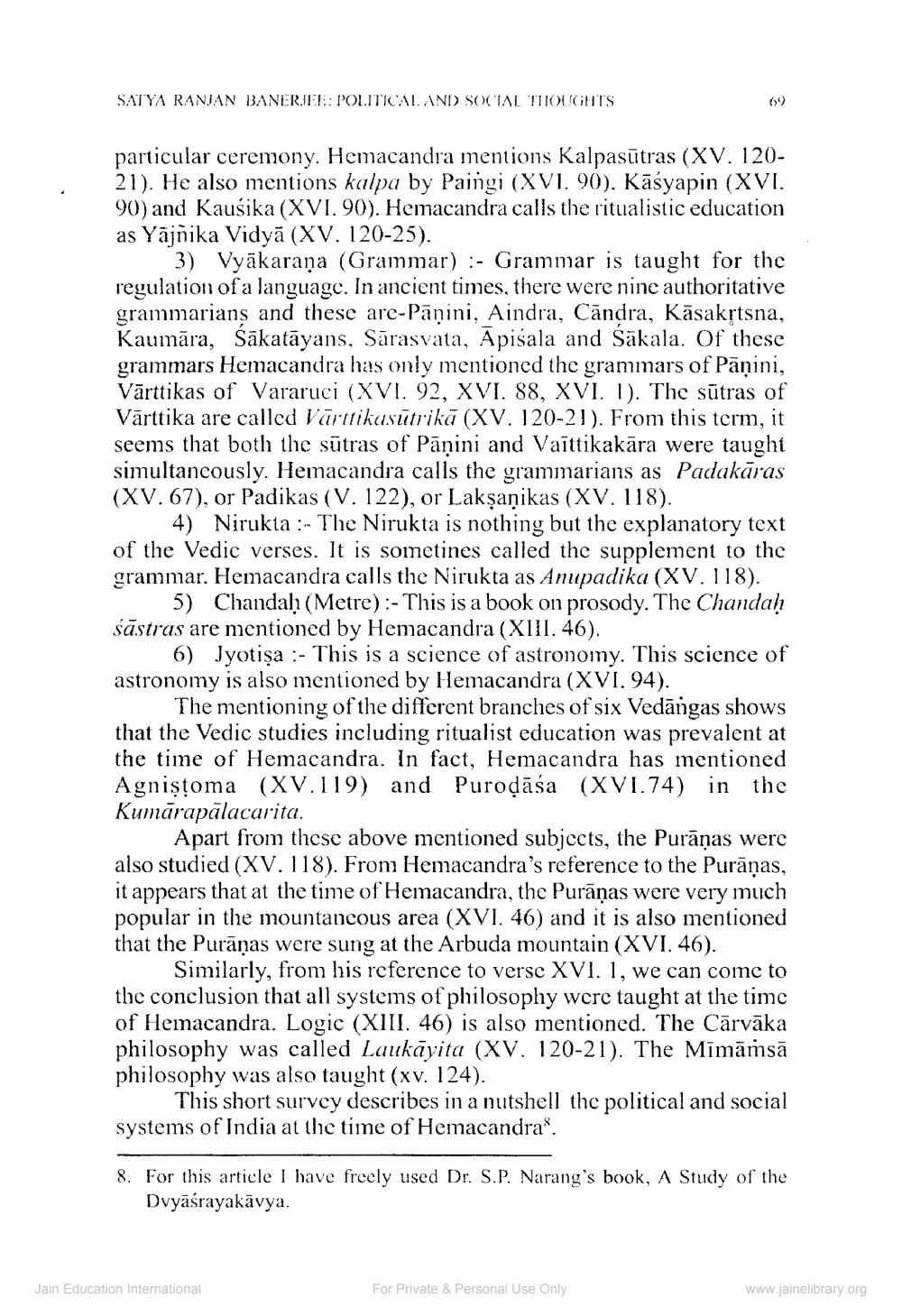________________
SATYA RANJAN BANERJEE: POLITICAL AND SOCIAL THOUGHTS
particular ceremony. Hemacandra mentions Kalpasūtras (XV. 12021). He also mentions kalpa by Paingi (XVI. 90). Kāśyapin (XVI. 90) and Kausika (XVI. 90). Hemacandra calls the ritualistic education as Yājnika Vidyā (XV. 120-25).
3) Vyakarana (Grammar) :- Grammar is taught for the regulation of a language. In ancient times, there were nine authoritative grammarians and these are-Panini, Aindra, Candra, Kāsakrtsna, Kaumāra, Sākatāyans, Sārasvata, Āpisala and Säkala. Of these grammars Hemacandra has only mentioned the grammars of Pāņini, Vārttikas of Vararuci (XVI. 92, XVI. 88, XVI. 1). The sūtras of Vārttika are called Vārttikasutrikā (XV. 120-21). From this term, it seems that both the sūtras of Pāṇini and Vaittikakāra were taught simultaneously. Hemacandra calls the grammarians as Padakāras (XV. 67), or Padikas (V. 122), or Lakşaņikas (XV. 118).
4) Nirukta : - The Nirukta is nothing but the explanatory text of the Vedic verses. It is sometines called the supplement to the grammar. Hemacandra calls the Nirukta as Anupadika (XV. 118).
5) Chanda(Metre):- This is a book on prosody. The Chandah Sāstras are mentioned by Hemacandra (XIII. 46).
6) Jyotisa :- This is a science of astronomy. This science of astronomy is also mentioned by Hemacandra (XVI. 94).
The mentioning of the different branches of six Vedāngas shows that the Vedic studies including ritualist education was prevalent at the time of Hemacandra. In fact, Hemacandra has mentioned Agnistoma (XV.119) and Purodāsa (XVI.74) in the Kumārapālacarita.
Apart from these above mentioned subjects, the Purānas were also studied (XV. 118). From Hemacandra's reference to the Purāņas, it appears that at the time of Hemacandra, the Purānas were very much popular in the mountancous area (XVI. 46) and it is also mentioned that the Purānas were sung at the Arbuda mountain (XVI. 46).
Similarly, from his reference to verse XVI. 1, we can come to the conclusion that all systems of philosophy were taught at the time of Hemacandra. Logic (XIII. 46) is also mentioned. The Cārvāka philosophy was called Laukāyita (XV. 120-21). The Mīmāmsā philosophy was also taught (xv. 124).
This short survey describes in a nutshell the political and social systems of India at the time of Hemacandra.
8. For this article I have freely used Dr. S.P. Narang's book, A Study of the
Dvyāśrayakāvya.
Jain Education International
For Private & Personal Use Only
www.jainelibrary.org




